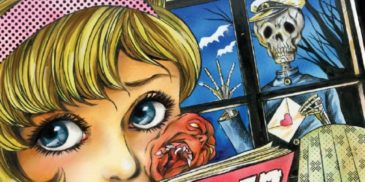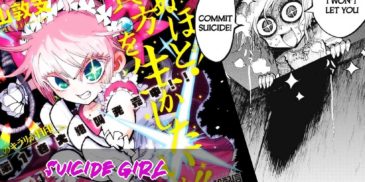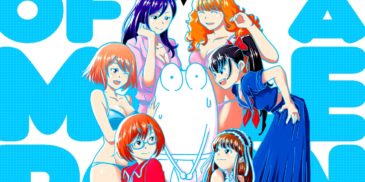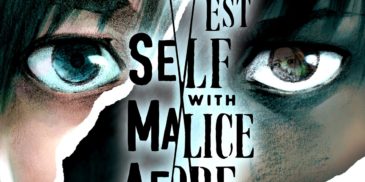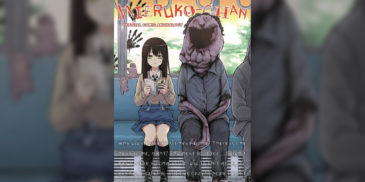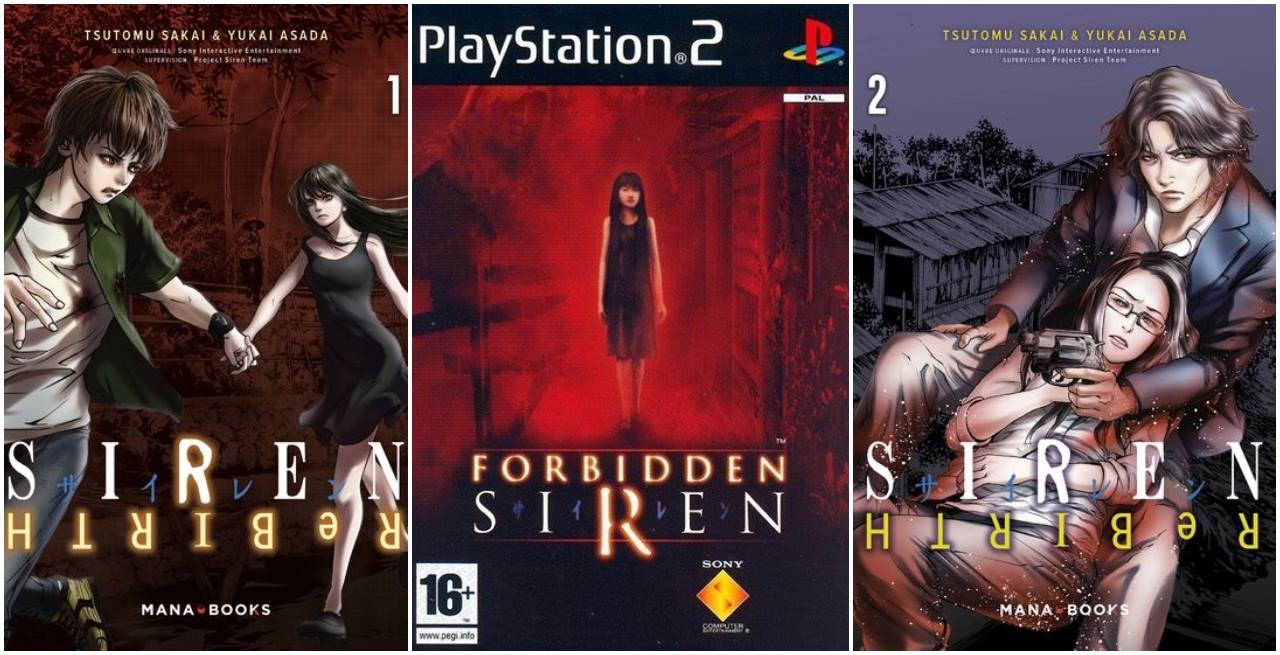
Siren, or Forbidden Siren in PAL areas, is a horror video game series in a Japanese style, created by Keiichiro Toyama (also known for the games Silent Hill 1 and the Gravity Rush series), consisting of three games plus numerous expansions in other medias like a movie in 2006, novelizations, magazines, hidden websites, and of course mangas. It is one of the most important J-horror game series. It deals with a lot of mysticism, cults, and creepy mysteries around isolated places like Hanuda Village or Yamijima Island. The franchise is also well known for its use of sight-jack system (seeing through the eyes of the enemies and other people), its notorious difficulty (at least in the first game), its non-linear narration, its complex stories, its multiple protagonists you play as, each of them having specific peculiarities, and its multiple archive system that helps the player understanding the plot with many artefacts to find, sometimes beyond the games themselves…
Several manga series derived from it have been created. The latest one, Siren Rebirth, was released around 2018 in Japan. Now it’s currently receiving a French release throughout 2020 and 2021. In this article, I’ll be reviewing the two first volumes of this manga series, based on their French edition. Please follow me to Hanuda Village if you feel you can handle its secrets, I know the path. Make sure not to lose your way, or you may never be the same again…
A Resurrection for the Franchise
Siren Rebirth, written by Tsutomu Sakai and featuring art by Yukai Asada, was first issued in online form in 2019 for the 15th Anniversary of the series. The manga was then physically released in France during January 2021. To replace the cancelled first series Call of the Red Sea, this one revisits the story of Hanuda village again, but this time sets the events during 2019. Consequently, the characters now have cellphones and laptops as modern technology to survive against the Shibito, something which would have been interesting as a gameplay mechanics in the Siren games for any remake.
Overseen by the original Siren Team, the manga explores more of the backstory to characters like Kei Makino or Shiro Miyata, providing alternate versions of some events and even altering characters’ personalities. It is interesting to see the backstory of Hanuda village and its inhabitants from a new perspectives, enhancing our understanding of the characters in a more intimate way. The drawings are effective as enticing art and successfully deliver creepy effects. The style is different than in Call of the Red Sea, but it complements the universe of Siren perfectly.
Volume 1
The first volume gives a lot of backstory of popular characters, like the twins Kei Makino and Shiro Miyata in particular. It explores they were found, how different their childhood was, etc. It helps understand more of the behavior of Shiro as an adult, and you’re even likely to sympathize with him, given how things worked out. You also understand Kei’s responsibilities as a priest, as well as the role of the priestess Hisako Yao.
The first thing to attract attention as you open the volume is the amazing style of artworks, utilizing strong monochrome contrasts to dive you into a spooky visual atmosphere, which reminds of other horror manga like the works of Junji Ito. This style remains consistent throughout the volumes, establishing a coherent world which absorbs you into a real journey of the cursed village and even compels you to enjoy revisiting the events of the game. The characters themselves look terrific and inspiring, they aren’t designed in a way to be devoid of personality. As for the creatures, the Shibito look terrifying and often occupy a whole page (or half of it), making them really impactful and awash with detail. It recreates the world, characters, emotions, environments and atmosphere accurately as any adaptation should.
We’re also given a new version of Naoko Sato, the TV reporter who endures the end of her career because of her unescapable aging. Here, she’s portrayed in a darker way than in the game (in which she was mostly annoying), and shows how cruel and unlikable she can be. The manga details her arrival in the village with her TV crew, and blends this into modern technologies of our era as a fun change (laptop, flash drive, etc).
Naturally, we also follow the protagonist, Kyoya, and learn how he got interested in having a trip in this occult village – rumours online compelled him. His personality is very close to how he is in the game, and most of his path is the same (with more details, however, about how he got lost and everything). Interestingly, some pages are actually almost identical to cutscenes from the game – moments of faithful adaptation. Incidentally, it is reassuring to see the respect of the source material from their effort of faithful adaptations in sections.
At the end, the manga also features a new interview of two persons involved in the game: Naoko Sato (scenario writer of the series) and Nobuaki Mitsuda (actor who plays the priest Kei Makino and the doctor Shiro Miyata). In brief, they talks about conception of the game (writing, motion capture and voice recording) and its infamous difficulty. They both admitted they can’t finish the game because it’s too hard even for them, but they’re happy about the solid dedication and passion the fans have shown, to beat the game and comprehend its complex story. They’re very grateful that the series came this far and achieved a cult following. As a fun fact, they mention how the trailers and commercials for the first game were considered so scary that the Japanese TV channels broadcasting these decided to censor them as they could be seen in the morning while children watched. Although the producers were angry with the developers about that, Mrs. Sato mentions how this event contributed to the success of the game, contributing to the reputation as a terrifying game.
An English fan translation of the interview is available here.
Volume 2
While the first volume dealt more about the characters of Shiro Miyata, Kei Makino, Naoko Mihama and Kyoya Suda, where their backstory is explored in detail, this one invites us to follow two teachers and their respective student: Professor Tamon Takeushi and his student, Yoriko Anno, who came here to investigate and find answers about the village ; and Reiko Takato with the little girl Harumi Yomoda, trapped in the school at night while they were watching the comets with binoculars. Those two pairs are quickly confronted with the Shibitos and have to survive in a vulnerable position, while they deploy tricks and strategies to avoid being killed, reminding us of some strategies from the game.
If the first volume gave a lot of backstory (mostly focusing on Shiro’s and Kei’s childhood), this one mainly takes place in present days, with most of the pages taking us in the core of the action in Hanuda village. Still, it takes its time to present our new characters and their story through flashbacks, like the childhood of Tamon Takeushi or the sad past of Reiko Takato. What’s particularly enjoyable in this manga (and it was also the case in the previous volume), however, is that it gives more details about elements that were only mentioned in the game (in the archives, mostly), offering an opportunity to properly experience them. Hence, the reader who’s not familiar with the game while discovering the manga won’t be lost and will understand who each character is and what he or she is doing here, know his motivations, etc.
But, someone, like me who played the games, won’t get bored and will find new things to enjoy, appreciating the new and unique contents which embellish memories of the games. Focusing on these new elements provides new insights to the plot in a satisfying way. In other words, it makes the game and its character even more enjoyable as expanding the universe even deeper. You get to like and understand characters, like Mrs. Takato as one example, even more, which is very cool: becoming more intimate with established characters only vaguely known beforehand. This manga drastically improves the universe of Forbidden Siren, enriching all lore with this as key supplementary material.
It does not indulge in prior sequences, however, and doesn’t re-enact the scenes of the PS2 game, but instead allows itself to do some alterations and modifications in the ways things happens, thus guaranteeing to surprise you one way or another. For example, you get to see for Shibitos in their human forms characters for the first time, how they were before any transformation, and get a better glimpse of their old personality. I’m thinking of the school director Mr. Eiji Nagoshi as an instance for this. Moreover, it develops more relationships, like the crush from Yoriko towards Tamon, which gives variations of tone, making it like a romantic comedy as an interesting (but fun) divergence from horror. It also deepens the mother-daughter relationship between Mrs.Takato and Harumi, and I would personally say it gives more personality to Harumi herself while she and her teacher try to escape the school.
Of course, the drawing style is still very fitting and sinister, doing justice to the characters and truly creepy Shibito. You also recognize easily the iconic places of the villages and notable stages of the game, like the elementary school or the church. This style is consistent with the previous volume and perfectly suits the eeriness of Siren, but also its strange humanity.
This time, instead of an interview from the writer of the game and the actor who played Shiro and Kei, this second volume expends the tradition of archives by adding Wikipedia pages of the characters (namely: Naoko and Tamon) and of the Mana Religion. Plus, the incident of the Sanzu beach where Mrs.Takato lost everything. It enhances a feeling of reality to the events of the plot in the factual formatting, a very “Siren” practice inherent to survival horror, and rewards the reader with precious, fun trivia about the characters. This contributes deeply to illustrating them all as more real persons in depth.
To conclude, it can be fairly said that this manga is a real success, especially for fans as a thorough tribute. Scary, sometimes fun, interesting and suspenseful, it is another love letter to the fans of Siren and appropriately respects the source material. Those first two volumes were very creepy, but pleasant journey in the depth of Japanese horror at its best. The following volumes are likely to extend the experience and lead us to discover the other characters and their torments, such as Risa Honda…
More Manga Reviews
Wonder House of Horrors (2023) Manga Review – So Cute Yet So Horrific
Collecting 10 stories of the macabre from Miyako Cojima, Wonder House of Horrors marks an impressive introduction of the mangaka to the West. Across the varied stories, Cojima distorts the…
Suicide Girl (2020) Manga Review – Dark-Humoured Magic Girl Manga
Suicide Girl is an ongoing action horror magic girl manga, written and illustrated by Atsushi Nakayama. Atsushi is best known as the creator/illustrator of Uratarou, The Zombie Maria, Nejimaki Kagyu,…
Manga Diary Of A Male Porn Star (NSFW) Review – Learning the Ins and Outs of AV
Manga Diary of a Male Porn Star is an autobiographical account of Kaeruno Erefante’s time in the AV industry. The manga follows Kaeruno’s time from being a cock on screen…
I’m Not Meat (NSFW) Manga Review – Fighting Those Animalistic Desires
Handsome Usahara Kunio has no shortage of women falling for him, as a competent career man with a well-tuned physique, all his coworkers are left wondering; why is this catch…
Manga Review: My Dearest Self With Malice Aforethought Vol. 1 – A Deliciously Dark Psychological Head Trip
This past year, I have come to grow a deep appreciation of digitally distributed manga. Certainly the appeal of owning a physical book will never be beat, but the digital…
Mieruko-chan Anthology Comic (2023) Manga Review – An Official Collection of One-Shots
Mieruko-chan Anthology Comic is a 2023 compendium of short, one-shot manga based around the characters of Tomoki Izumi’s popular supernatural manga/anime Mieruko-chan. The anthology features work from Yousuke Katayama, Shuu…
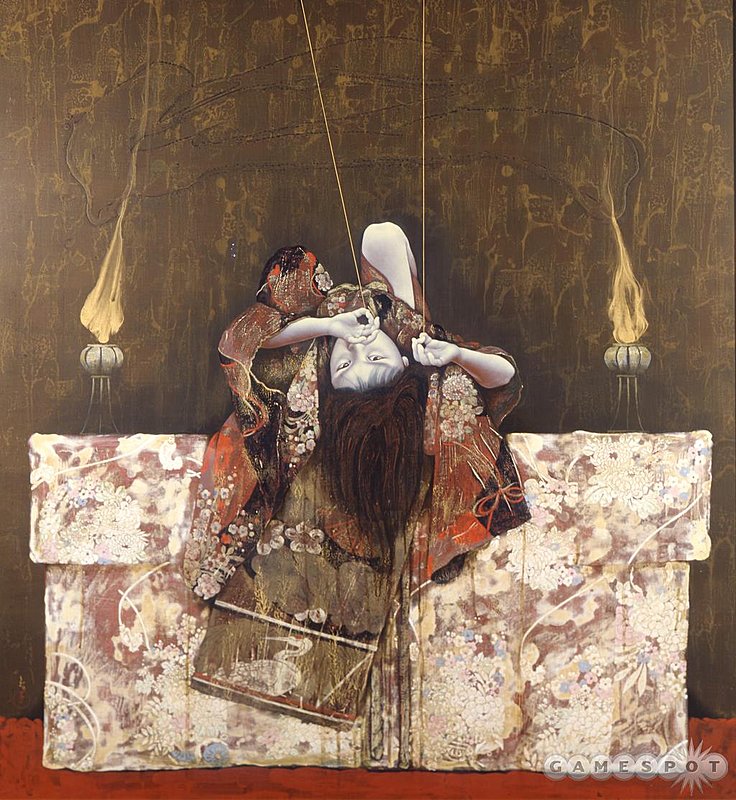
Student and former short film maker, Anthony Auzy always loved scary stories and horror content, with a special fondness for Asian horror. It inspires him for poem books, short stories, short films and videos, and other creations. He like to dig hidden findings that may be overlooked or unnoticed, and I enjoy scary Asian games and spooky reads. Besides watching many J-horror movies, he keens on exploring how the movement was born and expanded in different forms of media, and study its cultural impact.
